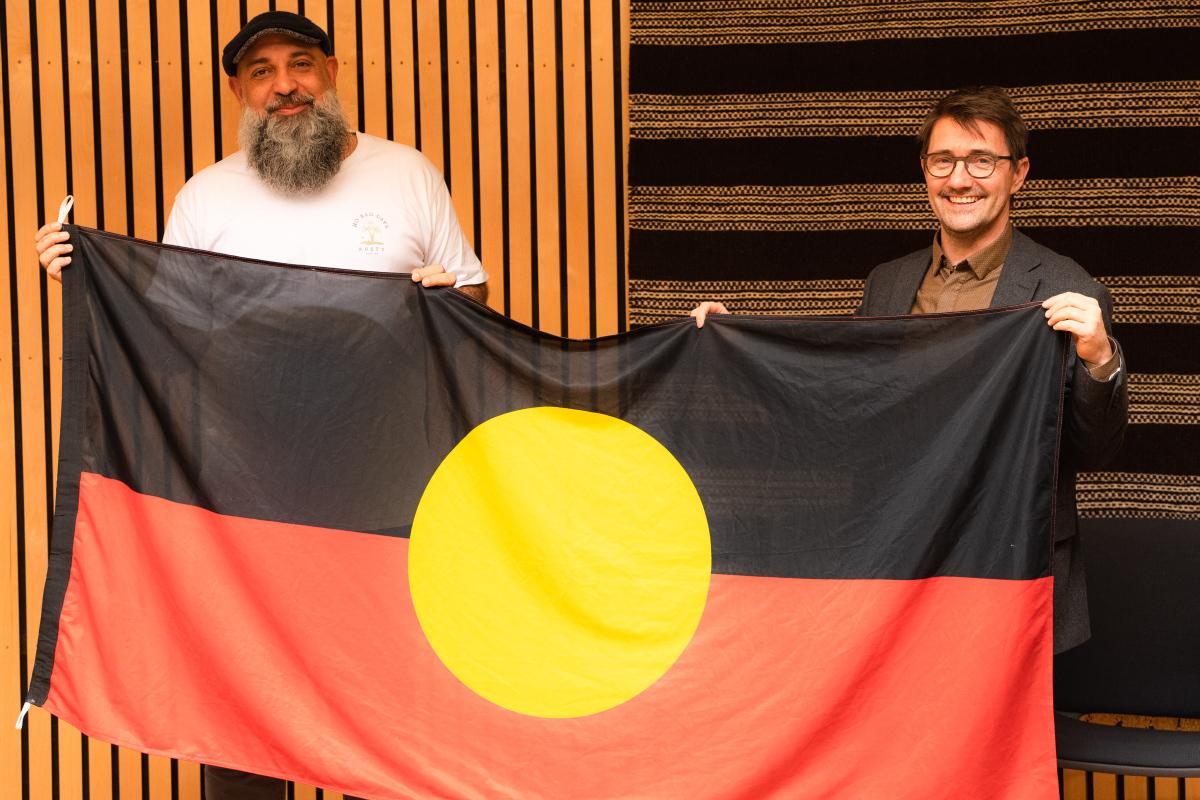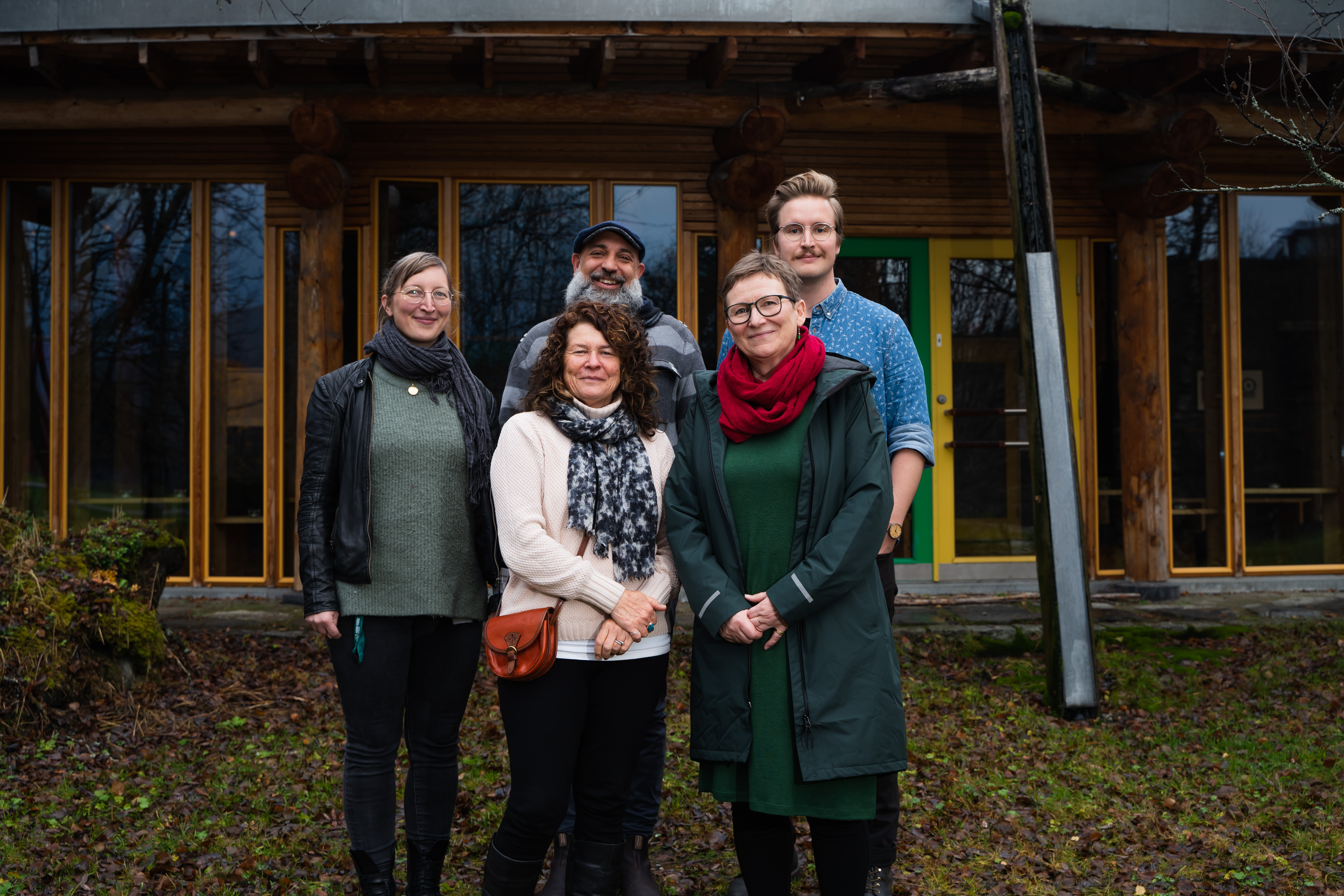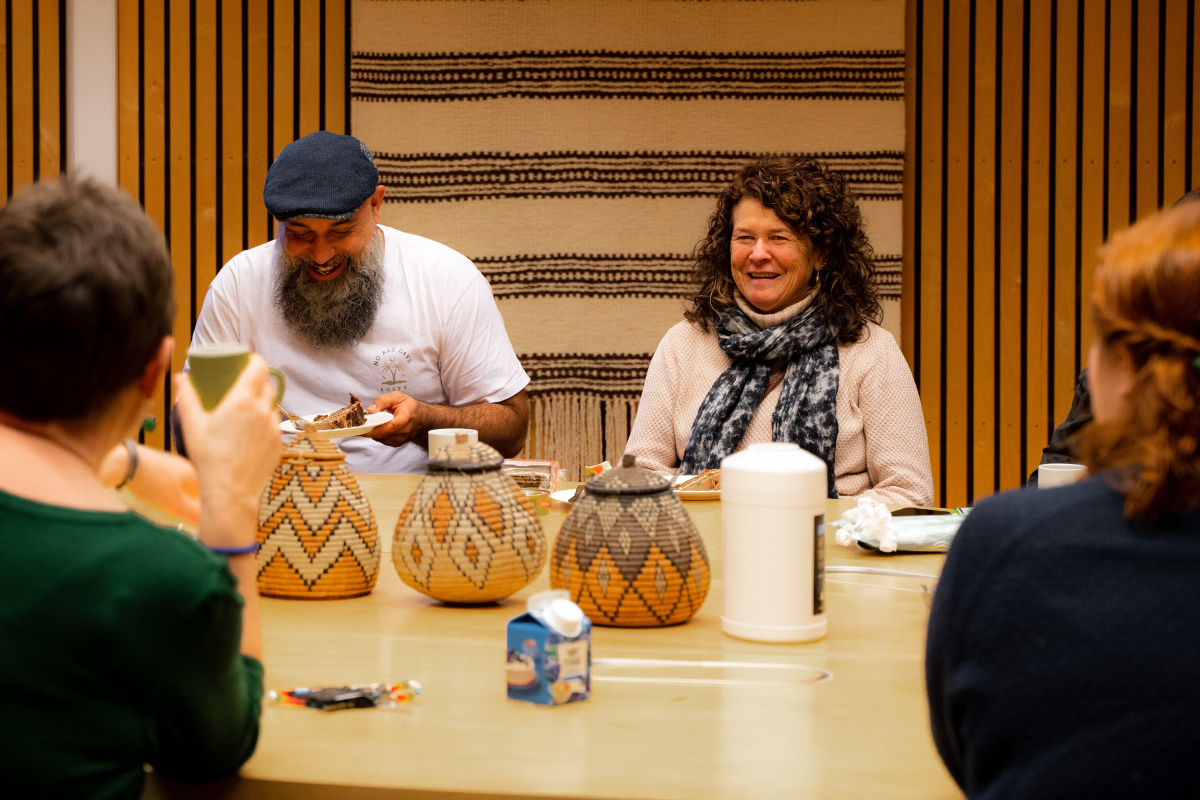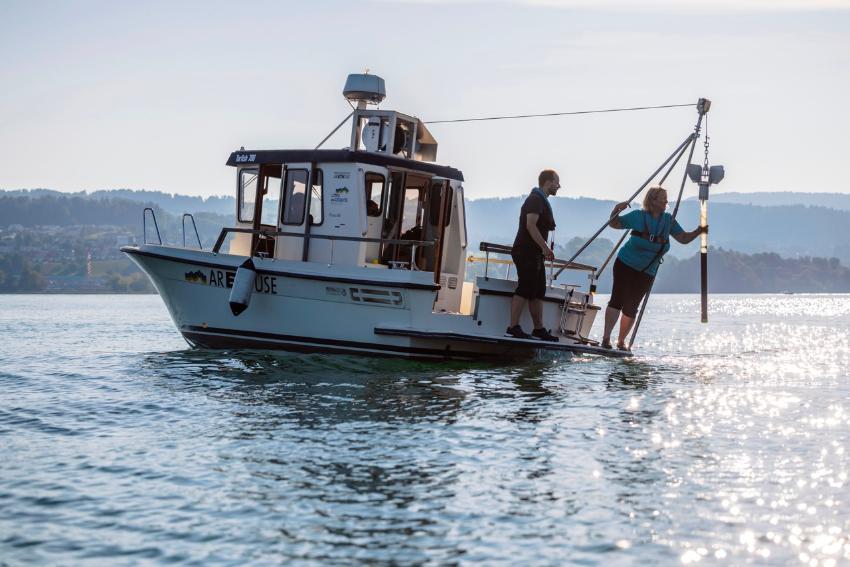"The landscape is different, but the connection to nature is the same"
A project on indigenous knowledge brings together researchers from different parts of the globe.

Indigenous people often have a unique local knowledge that has been acquired over generations, by spending time in the same areas year after year. In Sápmi, reindeer herders have moved from winter pasture to summer pasture through generations for hundreds of years, and thus know these areas very well. They can therefore be a resource when decisions about natural areas are to be made. Nevertheless, those with the most local knowledge are not always listened to.
"The ones who make decisions often sit behind a computer screen, and don’t even go out to see the area they are making a decision about", says Jade Kennedy from Wollongong University.
He belongs to Australia's aborigines and is one of the researchers involved in the project Indigenous knowledge systems, planning and environmental decision making (INDKNOW) at UiT, a collaborative project between researchers in Australia, Papua New Guinea, Sweden and Norway on indigenous knowledge and decision-making.
"From an indigenous perspective, you can never make a decision without being present in the landscape you are making a decision about", says Kennedy.
The Aborigines believe that all knowledge comes from land. And they have a deep philosophy of caring for all living things.
Useful knowledge sharing
"The context is different, the story is different. But we still benefit greatly from such knowledge sharing", says Else Grete Broderstad, professor at the Center for Sami Studies at UiT.
She leads the project on indigenous knowledge.
"It is very interesting to learn about how indigenous knowledge can be listened to or integrated by authorities at various levels", she says.
She explains that they hope that the project can contribute to better visibility and utilization of indigenous knowledge when making decisions that also concern indigenous people.
"I think we have a lot to learn from how they do things in Australia. In legislation, regulation and institutions", says Broderstad.
Lena Gross is a postdoctoral researcher in the international indigenous peoples project.
"We must explain the background of our research better when we collaborate internationally. That makes us think more clearly. For example, with regards to the welfare state, how we do things in Norway, and how it is for minorities that live here. I also understand more about our cases in Sápmi, when I have to explain them to someone who comes from a completely different context", says Gross.

Visiting UiT for the tenth time
Catherine Howlett is one of the professors from Australia who contributes to the project.
"Our project on the inclusion of indigenous knowledge in decision-making is also about knowledge sharing."
Howlett is visiting UiT for the tenth time, but this time she has her colleague Jade Kennedy with her.
"The fact that Jade is here helps me to see the Sami culture through Jade's perspectives".
She explains that as a researcher with a point of view in the majority culture, she would never be able to represent Australia's indigenous cultures in the way that Jade can.
"The visit has been a rich sharing, with deep conversations. Culture and knowledge have been shared. I hope it’s seen as a gift", says Howlett.

Connecting indigenous peoples
Jade Kennedy says that the relationship with nature, or land as he calls it, is similar.
"Like us, the Sámi have a strong relationship with stories found in families. Culture is linked to the stories and creates a cultural understanding of who we are."
He explains that although the history and context are different, there are many things in common.
"I also see similarities in the presentation of culture. The Sami show their culture through clothes and colours, which unites them as a group. We also use colours as a form of identity", he says.
He explains that indigenous peoples are different, but they can have a lot in common in the way they show their culture.
"It has meant a lot to come to Norway, and especially to Northern Norway. I'm from the south coast of Australia so it really is on the other side of the world".
On a personal level, it has had a deeper meaning.
"The cultural intersections are different, but similar. The landscape is different, but the relationship to the landscape can be the same. That connects us as indigenous people", says Kennedy.
Historic ruling
Kennedy says it is important for indigenous people to use their voice when necessary. He points to the example he has learned about in Norway about Sami reindeer herders who fight against windmills established in traditional reindeer herding areas.
Reindeer owners filed lawsuits against the Norwegian authorities because they have been deprived of central winter grazing areas.
The Supreme Court decided that the wind power development at Storheia and Roan in Trøndelag was in violation of the rights of indigenous people. It was an unanimous decision. Decisive for the ruling was the consideration of cultural protection under the UN Convention on Civil and Political Rights. The Supreme Court concluded that "the concession decision contravenes the reindeer owners' rights according to the convention provision". The development of wind power thus destroyed the Sámi's opportunities for reindeer husbandry in these areas.
This was a particularly important and historic judgment for the reindeer herders in Fosen, that have persevered in this situation for many years. Broderstad says that an important topic in the discussion with the Australian guests was the ongoing violation of human rights in the Fosen case.
-
Fiskeri- og havbruksvitenskap - bachelor
Varighet: 3 År -
Fiskeri- og havbruksvitenskap - master
Varighet: 2 År -
Akvamedisin - master
Varighet: 5 År -
Peace and Conflict Transformation - master
Varighet: 2 År -
Computer Science - master
Varighet: 2 År -
Geosciences - master
Varighet: 2 År -
Biologi - bachelor
Varighet: 3 År -
Nordisk - årsstudium
Varighet: 1 År -
Historie - årsstudium
Varighet: 1 År -
Engelsk - årsstudium
Varighet: 1 År -
Arkeologi - bachelor
Varighet: 3 År -
Informatikk, datamaskinsystemer - bachelor
Varighet: 3 År -
Informatikk, sivilingeniør - master
Varighet: 5 År -
Allmenn litteraturvitenskap - årsstudium
Varighet: 1 År -
Geologi - bachelor
Varighet: 3 År -
Farmasi - master
Varighet: 2 År -
Romfysikk, sivilingeniør - master
Varighet: 5 År -
Klima og miljøovervåkning, sivilingeniør - master
Varighet: 5 År -
Bærekraftig teknologi, ingeniør - bachelor
Varighet: 3 År -
Filosofi - master
Varighet: 2 År -
Anvendt fysikk og matematikk, sivilingeniør - master
Varighet: 5 År -
Arctic Nature Guide - one year programme
Varighet: 1 År -
Arktisk friluftsliv og naturguiding - bachelor
Varighet: 3 År -
Arktisk friluftsliv - årsstudium
Varighet: 1 År -
Grunnskolelærerutdanning for 1.-7. trinn - master
Varighet: 5 År -
Kunsthistorie - nettbasert førstesemesterstudium
Varighet: 1 Semestre -
Governance and Entrepreneurship in Northern and Indigenous Areas - master
Varighet: 4 År -
Samfunnsplanlegging - nettbasert førstesemesterstudium
Varighet: 1 Semestre -
Internasjonal beredskap - bachelor (samlingsbasert)
Varighet: 3 År -
Landskapsarkitektur - master
Varighet: 5 År -
Grunnskolelærerutdanning for 5.-10. trinn - master
Varighet: 5 År -
Ph.d.-program i naturvitenskap
Varighet: 3 År -
Environmental Law - master
Varighet: 2 År -
Ph.d.-program i humaniora og samfunnsvitenskap
Varighet: 3 År -
Nordic Urban Planning - master
Varighet: 2 År -
Samfunnsøkonomi med datavitenskap - master
Varighet: 2 År -
Luftfartsvitenskap - master
Varighet: 3 År -
PhD Programme in Science
Varighet: 3 År -
PhD programme in Nautical Operations
Varighet: 3 År -
Lektor i språk og samfunnsfag trinn 8-13 - master
Varighet: 5 År -
Matematiske realfag - bachelor
Varighet: 3 År -
Havteknologi, ingeniør - bachelor (ordinær, y-vei)
Varighet: 3 År -
Landscape Architecture - master
Varighet: 2 År -
Contemporary Issues in Risk and Crisis Management - master
Varighet: 2 År -
Informatikk, datafag - bachelor
Varighet: 3 År -
Computer Science - master
Varighet: 2 År -
Fornybar energi, sivilingeniør - master
Varighet: 5 År -
Arkeologi - master
Varighet: 2 År -
Biology - master
Varighet: 2 År -
Technology and Safety in the High North - master
Varighet: 2 År



